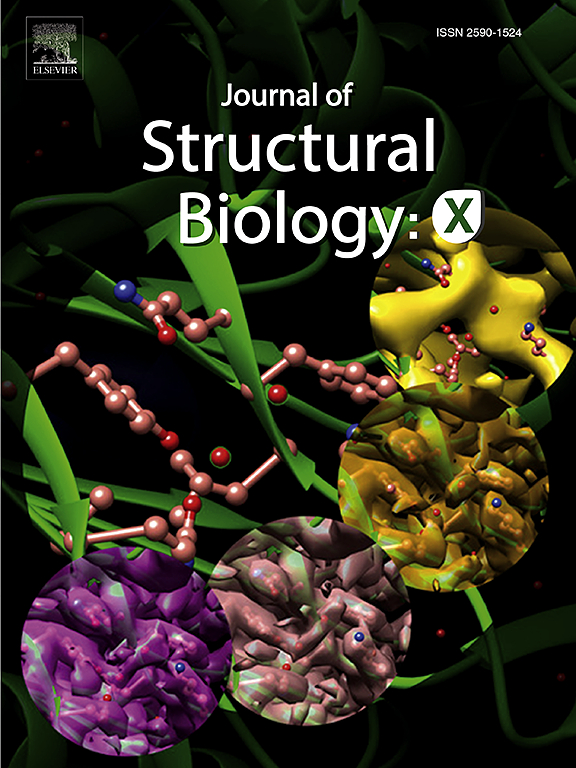3D Multi-modal Imaging of demineralised dentine using combined synchrotron µ-XRD-CT and STXM-CT
IF 2.7
3区 生物学
Q3 BIOCHEMISTRY & MOLECULAR BIOLOGY
引用次数: 0
Abstract
Dental caries is the most prevalent oral disease that causes structural and compositional changes of the dental hard tissues due to a chronic demineralisation (combined with possible phases of remineralisation) process. Though considerable efforts have been directed at studying natural and artificial carious lesions, most characterisations remain either constrained to 2D analyses or have been unable to achieve fine resolution in 3D due to limited field of view. To overcome this challenge, the present study combined X-ray diffraction (XRD) and scanning transmission X-ray microscopy (STXM) tomography techniques to analyse the mineral density, scattering intensity, and crystallite size in normal, carious, 30 % artificially demineralised, and 50 % artificially demineralised dentine. Combined XRD and STXM tomography was performed on the I18 beamline at Diamond Light Source, using a 15 keV monochromatic beam with 2 × 2 µm spotsize and scanning with translation steps of 2 µm, providing a reconstructed voxel size of 2 × 2 × 2 µm. Natural carious dentine showed a reduction in hydroxyapatite (HAp) crystallite size due to chronic demineralisation. This was unlike artificially demineralised dentine samples that underwent short, continuous demineralisation, which created a zone of fully demineralised dentine, near the sample surface, and a zone of partially demineralised dentine that had a reduced mineral density but an increased average crystallite size.

同步加速器μ-XRD-CT与STXM-CT联合三维多模态成像牙本质脱矿。
龋齿是最常见的口腔疾病,由于慢性脱矿(结合可能的再矿化阶段)过程,导致牙齿硬组织的结构和成分变化。这些变化会影响最重要的口腔功能和美观,还会引起疼痛和不适。尽管在研究自然和人工龋齿病变方面已经做出了相当大的努力,但大多数特征仍然局限于2D分析,或者由于视野有限而无法在3D中实现精细分辨率。为了克服这一挑战,本研究结合x射线衍射(XRD)和扫描透射x射线显微镜(STXM)断层扫描技术,分析了正常、龋齿、30% %人工脱矿和50% %人工脱矿的牙本质中的矿物质密度、散射强度和晶体大小。采用15 keV单色光束,2 × 2 μm光斑尺寸,平移步长为2 μm,对金刚石光源下的I18光束线进行XRD和STXM联合层析成像,重建体素尺寸为2 × 2 × 2 μm。天然龋齿牙本质显示羟基磷灰石(HAp)晶体大小减少,由于慢性脱矿作用。这与人工脱矿的牙本质样品不同,人工脱矿的牙本质样品经历了短暂的、连续的脱矿,在样品表面附近形成了一个完全脱矿的牙本质区域,以及一个部分脱矿的牙本质区域,该区域的矿物密度降低,但平均晶粒尺寸增加。
本文章由计算机程序翻译,如有差异,请以英文原文为准。
求助全文
约1分钟内获得全文
求助全文
来源期刊

Journal of structural biology
生物-生化与分子生物学
CiteScore
6.30
自引率
3.30%
发文量
88
审稿时长
65 days
期刊介绍:
Journal of Structural Biology (JSB) has an open access mirror journal, the Journal of Structural Biology: X (JSBX), sharing the same aims and scope, editorial team, submission system and rigorous peer review. Since both journals share the same editorial system, you may submit your manuscript via either journal homepage. You will be prompted during submission (and revision) to choose in which to publish your article. The editors and reviewers are not aware of the choice you made until the article has been published online. JSB and JSBX publish papers dealing with the structural analysis of living material at every level of organization by all methods that lead to an understanding of biological function in terms of molecular and supermolecular structure.
Techniques covered include:
• Light microscopy including confocal microscopy
• All types of electron microscopy
• X-ray diffraction
• Nuclear magnetic resonance
• Scanning force microscopy, scanning probe microscopy, and tunneling microscopy
• Digital image processing
• Computational insights into structure
 求助内容:
求助内容: 应助结果提醒方式:
应助结果提醒方式:


